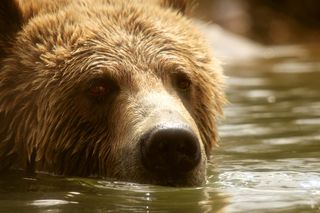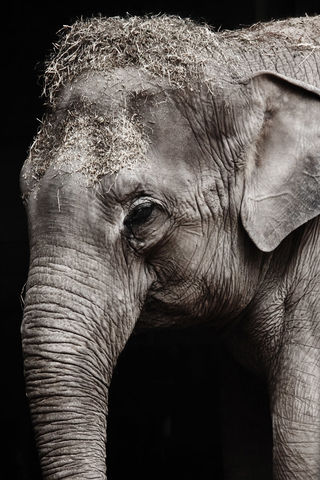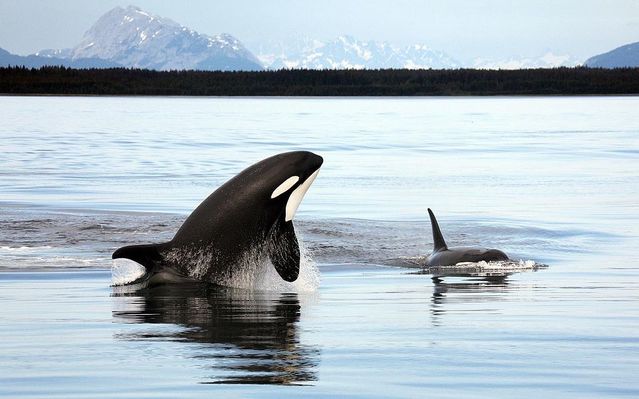Environment
Should Animals Sue Scientists for Libel?
Science shows that animals are not violent by nature, yet the myth persists.
Posted January 22, 2017

If you prick us, do we not bleed?
If you tickle us, do we not laugh?
If you poison us, do we not die?
And if you wrong us, shall we not revenge? –Shakespeare, Earl of Oxford, Merchant of Venice, Act III, Scene 1
Everyone has to admit that at least on one occasion, even if uttered under the breath or in the privacy of home, they have said, when piqued, something not-so-true of someone else such as, “I just know that she stole that idea from him” or “You can bet he lied not knowing about who did it.” Untrue verbal accusations are called “slander,” and when they are in written down or published, referred to as “libel.”
Slander and libel are serious business in the human world. Sticks and stones break bones, but words can also do a lot of damage. As Superior Court Judge Frederick Weisberg noted in his decision supporting climate researcher Michael Mann when accused of fraud by the National Review:
Accusing a scientist of conducting his research fraudulently, manipulating his data to achieve a predetermined or political outcome, or purposefully distorting the scientific truth are factual allegations. They go to the heart of scientific integrity. They can be proven true or false. If false, they are defamatory. If made with actual malice, they are actionable.[1]
Such falsifications have far reaching implications because science is a collective endeavor whose intent, protocol, and inference-making methods inform the public, policy, and law. As the reigning epistemic authority, science is regarded as the purveyor of truth and often is the key arbiter between life and death. Because researchers asserted that non-humans lacked what we humans possess which warrants ethical and legal protection for our species, billions of Rats, Cats, Monkeys, Rays, Pigeons—the list goes on—have been and are sacrificed in lieu of humans as “animal models.”[2] Scientists proclaim that Grizzly Bears are dangerous, unpredictable, and become more so when they lose their fear of humans. So when bears commit “crimes against humanity”—begin to enjoy the company of campers or kill a human—agency biologists summarily execute the suspects.[3] What science says translates to on the ground practice and law.
But now, with science’s embrace of a trans-species understanding that nonhuman animals possess brains, minds, and consciousness comparable to our own, Chimpanzees, Orcas, Grizzly Bears, and other animals are in the position to right the mistruths and misdeeds imposed by researchers. As in-depth studies of wildlife show, it is the scientists who do violence, not their subjects.
Take Great Apes, for example. Chimpanzees have been a formative model for exploring humanity’s supposed genetically motivated taste for blood and gore. Researchers have long claimed that Chimpanzee violence, such as the shocking infanticide and other carnage exhibited by Jane Goodall’s Gombe subjects is evidence for human violence—the logic being that killing conspecifics confers genetic advantage for surviving victors[4, 5].
But, when cases for these claims are examined in detail, the “kill-to-conquer” theory pales. Zoologist Anne Innis Dagg and Anthropologist Robert Sussman criticized “genes make us do it” researchers for “un-scientific approaches” that fail to clearly distinguish inference from tangible observations. Rutgers anthropologist Brian Ferguson found that any definitive identification of causality is “pretty much of a wash.”[6, 7, 8, 9, 10] Even our gatherer-hunter ancestors have turned their backs on the- demon’s-in-us-all theory. Records show that 99% of the human genus has been guided by prosocial mores, not evil intentions.[11] Further, now that neuroscience has thrown its hat into the explanatory ring, the evolutionary advantage theory balloon collapses with a simple prick of an epigenetic pin. The data simply do not support universal rules for when, who, and why a Lion, Tiger, Bear, or Chimp will kill one another. [7]

What is known with certitude is that Chimpanzees and other wildlife accused of moral bankruptcy are susceptible to psychophysiological trauma. Modern human destruction is by far the strongest signal around the globe. All wildlife has been subjected to habitat destruction, food shortages, and mass killing since colonization. Researchers’ manipulation of Chimpanzee resources is linked to the community’s self-inflicted implosions. Epidemic infanticide and intra- and interspecific killing among African and Asian Elephants are symptoms of post-traumatic stress disorder (PTSD). Human violence has shattered wildlife traditions based on peace and cooperation.[12]
So why, when the vast amount of data shows otherwise, do scientists persist in trying to ascribe devilish deeds to other species as illustrated in the recent analysis of Orca menopause?[13] This question is ripe for Freudian analysts and moral neuropsychologists.[14] However, there is something that researchers can do on their own to avoid making libelous projections: look at all the evidence objectively before leaping to a handy, lionized theory.
And to answer the starting question: Should animals sue scientists for libel? The answer is yes, and the opportunity is soon coming.[15]

Literature Cited
[1] Union of Concerned Scientists, 2014. Why this climate scientist’s libel case matters. http://www.ucsusa.org/publications/got-science/2014/got-science-februar…
[2] Bradshaw,G.A. 2012. A convenient truth. Psychology Today. https://www.psychologytoday.com/blog/bear-in-mind/201204/convenient-unt…
[3] Grose, J. 2012, A death in Yellowstone. Slate.http://www.slate.com/articles/health_and_science/death_in_yellowstone/2…
[4] Wrangham, R.W., and D. Peterson. 1996. Demonic males: Apes and the origins of human violence. Houghton Mifflin Harcourt.
[5] Wrangham, R. W. 2010. "Chimpanzee violence is a serious topic. A response to Sussman and Marshack's critique of Demonic males: Apes and the origins of human violence." Digital Access to HarvardScholarship.https://dash.harvard.edu/bitstream/handle/1/4892937/wrangham_chimpanzee…
[6] Dagg, A.I. 1998. “Infanticide by Male Lions Hypothesis: A Fallacy Influencing Research into Human Behavior,” American Anthropologist 100, no. 4: 940–950.
[7] Bradshaw. G.A. 2017. Carnivore minds: Who these fearsome animals really are. Yale University Press.
[8] Balter, M. 2014 Why do chimps kill each other? Science. http://www.sciencemag.org/news/2014/09/why-do-chimps-kill-each-other
[9] Sussman, R. 2014. Don’t blame the chimps! Who's responsible for the lethal aggression in Sierra Leone's chimpanzees? The Evolution Institute. https://evolution-institute.org/article/chimpanzee-violence-explained/ https://www.nytimes.com/2014/09/18/science/lethal-violence-in-chimps-oc…
[10] Ferguson, R.B. 2011. “Born to Live: Challenging Killer Myths,” in Robert W. Sussman and C. Robert Cloninger, Origins of Altruism and Cooperation (New York: Springer, 2011), 249–270.
[11] Narvaez, D. 2013. The 99 Percent—Development and Socialization Within an Evolutionary Context. In Fry, D., War, Peace, and Human Nature: The Convergence of Evolutionary and Cultural Views.https://www.psychologytoday.com/blog/bear-in-mind/201701/learning-orca-…
[12] Bradshaw. G.A. 2009. Elephants on the edge: What animal teach us about humanity. Yale University Press.
[13] Bradshaw, G.A. 2017. Lessons from Orca menopause. Psychology Today. https://www.psychologytoday.com/blog/bear-in-mind/201701/learning-orca-…
[14] Narvaez, D. 2017. Is humanity's "moral sense" inherited or nurtured? Psychology Today. https://www.psychologytoday.com/blog/moral-landscapes/201701/is-humanit…
[15] Nonhuman Rights Project. http://www.nonhumanrightsproject.org/




